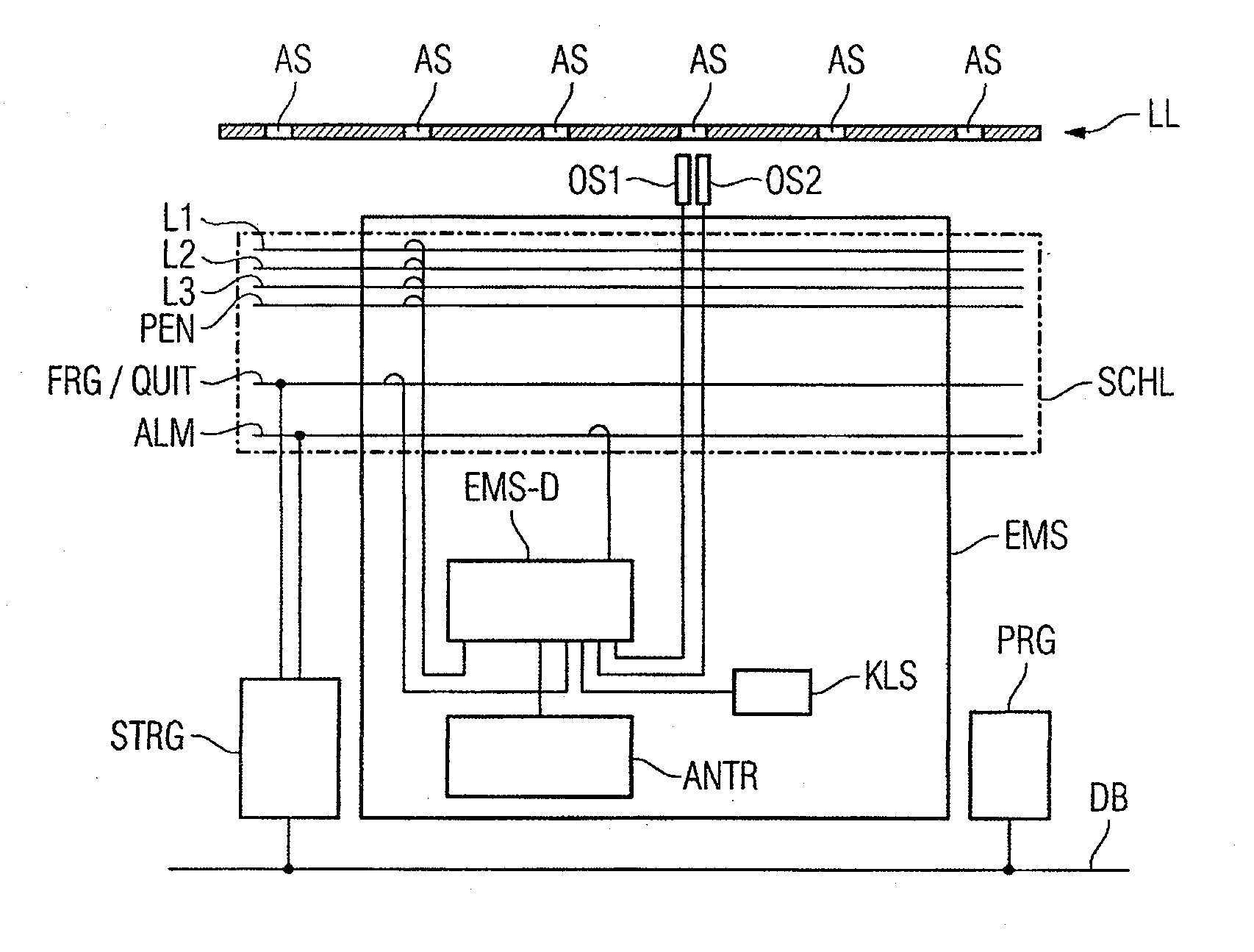Arrangement and Method for Controlling a Drive of an Automotive, Driverless Transportation Device
- Summary
- Abstract
- Description
- Claims
- Application Information
AI Technical Summary
Benefits of technology
Problems solved by technology
Method used
Image
Examples
Embodiment Construction
[0019]FIG. 1 is a schematic illustration of an automotive, driverless transportation device EMS (“electrical monorail system”) in an arrangement according to the prior art. Here, the transportation device EMS is connected by sliders (current collectors) to a stationary power rail system SCHL, which is equipped both with the conductors L1, L2, L3, PEN for supplying energy and with two further conductors FRG / QUIT (“enable” / “acknowledge”) and ALM (“alarm”). The stationary conductors of the power rail system SCHL are connected by sliding contacts to a controller EMS-D (“electrical monorail system-driver”) of the driverless transportation device EMS, which controller EMS-D in turn controls a drive ANTR of the transportation device EMS. In addition, the controller EMS-D is connected to the sensors MRS, KLS, where the sensors MRS (“magnetic incremental switch”) are activated by stationary activation devices (“cams”) on the route by movement of the transportation device EMS, and can easily ...
PUM
 Login to View More
Login to View More Abstract
Description
Claims
Application Information
 Login to View More
Login to View More - R&D Engineer
- R&D Manager
- IP Professional
- Industry Leading Data Capabilities
- Powerful AI technology
- Patent DNA Extraction
Browse by: Latest US Patents, China's latest patents, Technical Efficacy Thesaurus, Application Domain, Technology Topic, Popular Technical Reports.
© 2024 PatSnap. All rights reserved.Legal|Privacy policy|Modern Slavery Act Transparency Statement|Sitemap|About US| Contact US: help@patsnap.com










